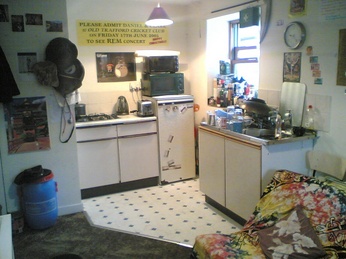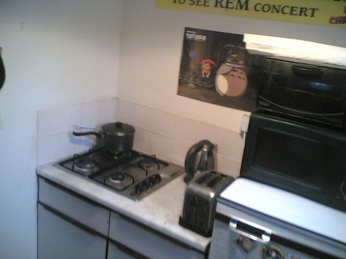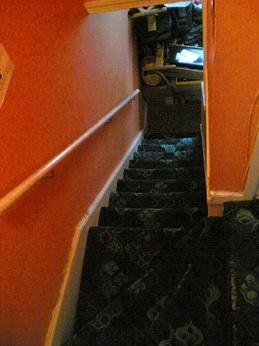Some time ago, I wrote a web-based calendar application in PHP, one of my favourite programming
languages. This tool would produce a HTML tabular calendar for a four week period, Monday to Sunday, in which the current date (or a
user-specified date) fell in the second week (so you’re looking at this week, last week, and two weeks in the future). The user-specified date, for various reasons, would be provided as
the number of seconds since the epoch (1970). In addition, the user must be able to flick forwards and backwards through the calendar, “shifting” by one or four weeks each time.
Part of this algorithm, of course, was responsible for finding the timestamp (seconds since the epoch) of the beginning of “a week last Monday”, GMT. It went something like this (pseudocode):
1. Get a handle on the beginning of "today" with [specified time] modulus [number of seconds in day]
2. Go back in time a week by deducting [number of seconds in day] multiplied by [number of days in week] (you can see I'm a real programmer, because I set "number of days in week"
as a constant, in case it ever gets changed)
3. Find the previous Monday by determining what day of the week this date is on (clever functions in PHP do this for me), then take
[number of seconds in day] multiplied by [number of days after Monday we are] from this to get "a week last Monday"
4. Jump forwards or backwards a number of weeks specified by the user, if necessary. Easy.
5. Of course, this isn't perfect, because this "shift backwards a week and a few days" might have put us in to "last month", in which case the calendar needs to know to deduct one month
and add [number of days in last month]
6. And if we just went "back in time" beyond January, we also need to deduct a year and add 11 months. Joy.
So; not the nicest bit of code in the world.
I’ve recently been learning to program in Ruby On Rails. Ruby is a comparatively young language which
has become quite popular in Japan but has only had reasonable amounts of Westernised documentation for the last four years or so. I started looking into it early this year after reading
an article that compared it to Python. Rails is a web application development framework that sits on top of Ruby and promises to be “quick and
structured”, becoming the “best of both worlds” between web engineering in PHP (quick and sloppy) and in Java (slow and structured). Ruby is a properly object-oriented language – even your literals are objects – and Rails takes full advantage of
this.
For example, here’s my interpretation in Rails of the same bit of code as above:
@week_last_monday = 7.days.ago.gmtime.monday + params[:weeks].to_i.weeks
An explanation:
-
@week_last_monday is just a variable in which I’m keeping the result of my operation.
-
7.days might fool you. Yes, what I’m doing there is instantiating an Integer (7, actually a Fixint, but who cares), then calling the “days” function on it, which returns me
an instance of Time which represents 7 days of time.
- Calling the ago method on my Time object, which returns me another Time object, this time one which is equal to Time.now (the time right now) minus the amount of
Time I already had (7 days). Basically, I now have a handle on “7 days ago”.
- The only thing PHP had up on me here is that it’s gmdate() function had ensured I already had my date/time in
GMT; here, I have to explicitly call gmtime to do the same thing.
- And then I simply call monday on my resulting Time object to get a handle on the beginning of the previous Monday. That simple. 24 characters of fun.
-
+ params[:weeks].to_i.weeks simply increments (or decrements) the Time I have by a number of weeks specified by the user (params[:weeks] gets the number of weeks
specified, to_i converts it to an integer, and weeks, like days, creates a Time object from this. In Ruby, object definitions can even override operators
like +, -, <, >, etc., as if they were methods (because they are), and so the author of the Time class made it simple to perform arithmetic upon times and dates.
This was the very point at which I feel in love with Ruby on Rails.

 I’ve recently discovered the sandwiches of Morgan’s, the butchers opposite Barclays on Great Darkgate Street. You go in there and mutter “beef” to the chap, who then
slices a generous bun and fills it with roast beef, a Yorkshire pudding, fried onions, and thick gravy. It’s a roast beef dinner… in a sandwich! Genius! Apart from the obvious mess it
makes to eat it, it’s fantastic.
I’ve recently discovered the sandwiches of Morgan’s, the butchers opposite Barclays on Great Darkgate Street. You go in there and mutter “beef” to the chap, who then
slices a generous bun and fills it with roast beef, a Yorkshire pudding, fried onions, and thick gravy. It’s a roast beef dinner… in a sandwich! Genius! Apart from the obvious mess it
makes to eat it, it’s fantastic.





